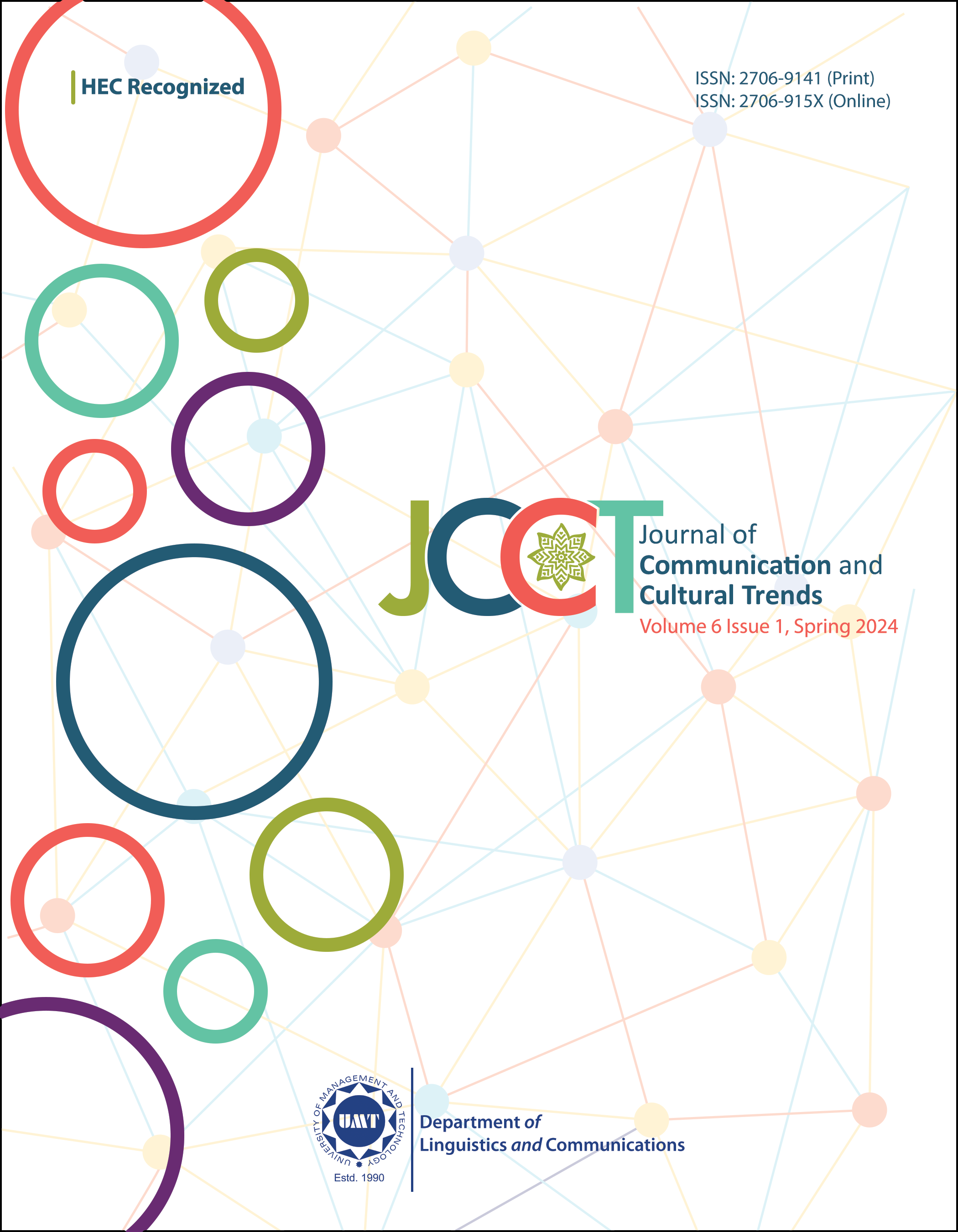Analysis of Distortion and Fragmentation in James Joyce's Finnegans Wake
Abstract
 Abstract Views: 0
Abstract Views: 0
The current study examined the elements of distortion and fragmentation as post modernistic deconstructive techniques in James Joyce’s ‘Finnegans Wake’. He used structurally and grammatically incorrect phrases and sentences in his works to represent the anarchy of traditional literary norms. The current study employed a literary close-reading approach to assess the disruptive traditional narrative structures and linguistic conventions of modern day literary texts. This study demonstrates Joyce’s uses of distortion and fragmentation to convey the themes of cyclical nature of history and the fragmentation in the novel. ‘Finnegans Wake’ by James Joyce is a semantically challenging novel since it is difficult to read and hard to interpret, with many scholars and readers proposing different theories about its semantic significance. The novel seems to be an example of avant-garde experimentation and a well written and recorded commentary on Irish history, culture, and politics. Moreover, the study also draws on critical and theoretical frameworks, including postmodernism and deconstruction, while contextualizing Joyce's use of distortion and fragmentation within broader literary and philosophical traditions and norms. Therefore, this current study contributes to the ongoing critical conversation around the selected novel ‘Finnegans Wake’. Additionally, it also offers new insights into Joyce's innovative and challenging literary style as how masterfully he knits fragmentation and distortion to depict anarchy and chaos in society, particularly, and in world, generally.
Downloads
References
Attridge, D. (1995). The singularity of Joyce’s ‘Finnegans Wake’. Routledge.
Beja, M. (2004). Joyce’s critics: Transitions in reading and culture. University of Wisconsin Press.
Bishop, J. (1986). Joyce’s book of the dark: Finnegans Wake. University of Wisconsin Press.
Campbell, J. (1961). A skeleton key to Finnegans Wake. Harcourt.
Cheng, V. (2000). Joyce, race, and empire. Cambridge University Press.
Eco, U. (1984). The Role of the Reader: Explorations in the Semiotics of Texts. Indiana University Press.
Fordham, F. (2007). Lots of fun at Finnegans wake: Unravelling universals. Oxford University Press.
Hayman, D. (1971). Joyce’s “Finnegans Wake”: The text as riddle game. University of California Press.
Iser, W. (1974). The implied reader: Patterns of communication in prose fiction from Bunyan to Beckett. Johns Hopkins University Press.
Lodge, D. (1972). The novelist at the crossroads. Routledge & Kegan Paul.
Lyotard, J.-F., Bennington, G., & Massumi, B. (1986). The postmodern condition: A report on knowledge. Manchester University Press. https://monoskop.org/images/e/e0/Lyotard_Jean-Francois_The_Postmodern_Condition_A_Report_on_Knowledge.pdf
Norris, M. (1978). Norris, M. (2019). The decentered universe of Finnegans wake: A structuralist analysis. John Hopkins University Press.
Rose, D. (1995). The textual diaries of James Joyce. University of Wisconsin Press.
Smith, J. K. (2007). Navigating distortion: The reader’s challenge in James Joyce’s Finnegans Wake. Modern Fiction Studies, 53(4), 671–688.
Williams, R. (1998). Fragmented dreams: The modernist response to Finnegans wake. Joyce Studies Annual, 9, 89–107.
Copyright (c) 2024 Dr. Muhammad Ajmal, Dr. Zahida Hussain, Rahat Bashir

This work is licensed under a Creative Commons Attribution 4.0 International License.

This work is licensed under a Creative Commons Attribution 4.0 International License. Authors retain copyright and grant the journal right of first publication with the work simultaneously licensed under a Creative Commons Attribution (CC-BY) 4.0 License that allows others to share the work with an acknowledgement of the work’s authorship and initial publication in this journal.








